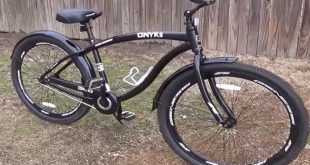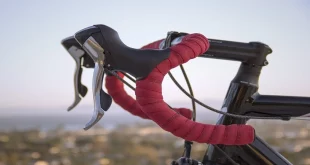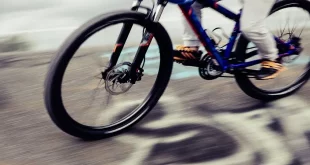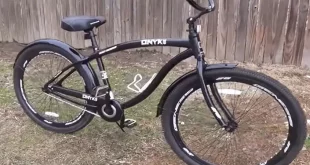Tubeless tires losing air overnight is a common occurrence and is considered normal. However, excessive air loss may indicate a problem that needs to be addressed.
Reasons For Air Loss In Tubeless Tires
Tubeless tires are gaining popularity among cyclists due to their superior performance and ability to eliminate the risk of pinch flats. However, it’s not uncommon for tubeless tires to lose air overnight. In this blog post, we will delve into the reasons behind this phenomenon and explore the potential causes that may lead to air loss in tubeless tires.
Tire Valve Issues:
- Damaged or worn-out valve cores can cause air leakage in tubeless tires.
- Loose valve nuts or improper valve installation can also result in air loss.
- Using low-quality or incompatible valve stems can lead to air leakage.
Rim Tape Problems:
- Insufficient or worn-out rim tape can cause air to escape from the spoke holes.
- Incorrectly installed rim tape that doesn’t cover the entire rim bed may result in air leakage.
- Broken or damaged rim tape can also lead to air loss in tubeless tires.
Sealant Degradation:
- Over time, sealant in tubeless tires can degrade, reducing its ability to seal punctures and prevent air leakage.
- Exposure to extreme temperatures or excessive humidity can accelerate sealant degradation.
- Inadequate sealant quantity or improper mixing can compromise its effectiveness.
Puncture Or Damage To The Tire:
- Punctures from sharp objects can cause air leakage in tubeless tires.
- Tears or cuts in the sidewalls or tread area can result in air loss.
- Impact damage or excessive strain on the tire can lead to air leakage.
By understanding the potential causes of air loss in tubeless tires, you’ll be better equipped to address any issues and ensure optimal performance. Regularly inspecting and maintaining your tires, valves, rim tape, and sealant will help minimize air loss and keep your tubeless setup running smoothly.
So, let’s explore each of these factors in more detail to keep your tubeless tires properly inflated and ready for your next adventure.
Checking And Maintaining Tubeless Tire Pressure
Tubeless tires are becoming increasingly popular among cyclists for their ability to provide a smoother, more efficient ride. However, one common question that arises is whether it is normal for tubeless tires to lose air overnight. In this section, we will discuss the importance of regular pressure checks and provide tips for checking and maintaining tubeless tire pressure.
By following these guidelines, you can ensure optimal performance and enhance your cycling experience. So let’s dive in and explore the key points on this topic.
Importance Of Regular Pressure Checks
- Regular pressure checks are crucial to ensure optimal tire performance and safety.
- Proper tire pressure affects grip, handling, and rolling resistance.
- Avoiding underinflation or overinflation can prevent flats and ensure a comfortable ride.
- Tire pressure naturally decreases over time, so regular checks are necessary to maintain optimal performance.
- Different factors, such as temperature changes and small punctures, can contribute to air loss overnight.
Using A Pressure Gauge
- A pressure gauge is an essential tool to accurately measure tire pressure.
- Choose a reliable and accurate pressure gauge for precise readings.
- Familiarize yourself with the recommended tire pressure for your specific tire model.
- Check your tire pressure before every ride and adjust as needed.
- Consult your tire manufacturer’s recommendations for the ideal pressure range.
Proper Inflation Techniques
- Start with a clean and dry tire bead and rim for proper inflation.
- Insert a valve core remover tool into the valve stem to allow air to flow freely.
- Attach a floor pump or compressor to the valve stem and inflate gradually.
- Monitor the pressure gauge as you approach the recommended tire pressure.
- Use short bursts of air to avoid overinflation and periodically check the pressure.
Top-Up With Sealant
- Tubeless tires often incorporate sealant to seal punctures and maintain air pressure.
- Regularly check the sealant level and top up if necessary.
- Shake the sealant bottle to ensure proper mixture before injecting it through the valve stem.
- Rotate the tire to distribute the sealant evenly and inspect for any leaks.
- Perform periodic sealant maintenance to keep your tubeless tires in top condition.
By following these guidelines for checking and maintaining tubeless tire pressure, you can ensure a smoother and more enjoyable cycling experience. Regular pressure checks, the use of a reliable pressure gauge, proper inflation techniques, and maintaining the sealant level are all essential steps in keeping your tubeless tires performing at their best.
Remember, a little maintenance goes a long way in enhancing your ride quality and minimizing the risk of unexpected flats. So, make it a habit to check your tire pressure regularly and enjoy the benefits of tubeless tires to the fullest.
Preventing Air Loss In Tubeless Tires
Ensuring proper installation:
- Ensure that the tire is properly seated on the rim to prevent any air leaks.
- Use the correct tire size and match it with the appropriate rim size for a snug fit.
- Follow the manufacturer’s instructions carefully when mounting the tire onto the rim.
Checking for loose valve cores:
- Check the valve core regularly to make sure it is tightened securely.
- Use a valve core tool to tighten it if necessary.
- Loose valve cores can cause air leakage, so it’s important to keep them tightened.
Inspecting rim tape:
- Examine the rim tape for any signs of wear or damage.
- Replace worn or damaged rim tape to ensure a proper seal.
- Make sure the rim tape covers the spoke holes completely to prevent air leaks.
Consistent sealant maintenance:
- Regularly check the sealant level in your tubeless tires.
- Add sealant as needed to maintain the proper amount for effective sealing.
- Shake the tires periodically to distribute the sealant evenly and maintain its effectiveness.
Puncture prevention measures:
- Avoid riding over sharp objects or debris that may puncture the tire.
- Use tire liners or puncture-resistant tires for additional protection.
- Keep tires properly inflated to provide better resistance against punctures.
Taking these preventive measures can significantly reduce the chances of experiencing air loss in tubeless tires. By ensuring proper installation, checking for loose valve cores, inspecting rim tape, maintaining consistent sealant levels, and applying puncture prevention measures, you can enjoy the benefits of tubeless tires without worrying about air leakage.
Keep in mind that regular maintenance and checks are essential for optimal tire performance and safety on the road.
Frequently Asked Questions On Is It Normal For Tubeless Tires To Lose Air Overnight?
Do Tubeless Tires Lose Air Faster Than Regular Tires?
Tubeless tires can lose air slightly faster than regular tires due to the absence of an inner tube. However, if your tubeless tires are losing air rapidly or overnight, there may be an issue that needs attention, such as a puncture or a faulty seal.
Why Do Tubeless Tires Lose Air Overnight?
It is not normal for tubeless tires to lose air overnight. If you notice significant air loss, it could be caused by various factors like a puncture, improper installation, a damaged valve stem, or a faulty rim tape. It is essential to inspect and fix any issues to maintain optimal tire performance.
How Much Air Loss In Tubeless Tires Is Considered Normal?
A small amount of air loss in tubeless tires is normal over time due to the permeability of the tire material. However, losing more than 2-3 psi per week could indicate a problem. Regularly checking and maintaining proper tire pressure is crucial for optimal performance and safety.
Conclusion
To wrap up, it is not uncommon for tubeless tires to lose air overnight due to natural factors such as temperature changes and small punctures. However, it is important to monitor your tire pressure regularly and fill it up as needed to ensure optimal performance and safety.
In order to minimize air loss, consider using a high-quality sealant and regularly inspecting your tire for any potential damage. Additionally, make sure that your tubeless setup is installed correctly and that the mounting and sealing surfaces are clean. By following these steps, you can experience the benefits of tubeless tires while minimizing any issues with air loss.
Don’t forget to keep in mind that if you notice significant and consistent air loss, it is advisable to have your tire inspected by a professional to identify and address any underlying issues.
 CommutingLife Explore The World On Two Wheels
CommutingLife Explore The World On Two Wheels





